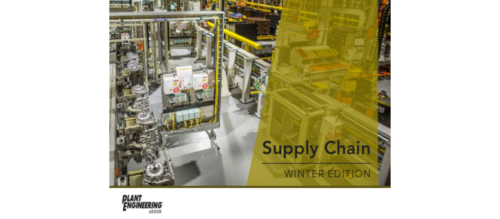Front-end engineering and design reduces risks, costs
Application Update: Comprehensive front-end engineering and design (FEED) can reduce risk and lower total cost of ownership for small and large capital projects. A FEED executed for ConocoPhillips optimized the project’s site selection, identified pipeline specifications, and provided refinery process design basis and preliminary piping and instrumentation diagrams (P&IDs) and other attributes. FEED improved delivery 14% under the high end of the estimate, to 39 weeks, down from 43 weeks. See FEED tips, advice, and six questions to ask.
Capital projects, whether a new-plant build or facility expansion, induce stress in six major areas:
- Will we finish on time?
- Are we going over budget?
- How many changes are going to be made throughout the process?
- How can we incorporate the latest design changes while maintaining committed-to costs and schedule plans?
- What unforeseeable risks will installation and commissioning bring?
- Is everyone involved with the project on the same page?
These concerns are valid. A Construction Industry Institute analysis of 975 light and heavy industrial projects found that only 5.4% of projects met initial cost and schedule targets within an acceptable margin. The 2012 PricewaterhouseCoopers Global Project Management Survey found that "poor estimates/missed deadlines" was the greatest factor contributing to poor project performance.
FEED the project
Front-end engineering and design (FEED) plays a key role in preparing projects for success. More than simply providing a project cost estimate, FEED comprises a detailed project scope, complete project budget, total cost of ownership, implementation timeline, and risk assessment-all of which combine to help reduce risk and uncertainty during the design and commissioning phases and can help create lasting value throughout the production lifecycle.
A FEED is conducted as part of a project’s concept phase. Initial feasibility and conceptual studies will help make the business case for a project and generally provide a cost accuracy of around +/- 30% to 40%. A well-funded and well-executed FEED can deliver a cost accuracy of +/- 10%—although preferred cost accuracy will vary by industry and customer preference—and help an organization understand a project’s technical requirements in detail. These requirements can include the control system architecture, equipment lists, process flow diagrams, piping and instrumentation diagrams (P&IDs), I/O connections, and motor and electrical specifications, among other things.
Important as FEED studies may be, however, they don’t always get the attention, support, or funding they need. When preparing to conduct a FEED, the following top considerations can help better position the outcomes for success.
Put design ahead of cost
Too often, FEEDs are conducted for a primary outcome-a cost estimate. But a FEED serves as the foundation and technical detail from which a project is built, and the basic engineering decisions made during the FEED will have a profound impact on every subsequent project phase.
Unfortunately, some organizations keep up-front engineering investments minimal, either because they don’t see the value in the FEED or because of time or cost restraints. As a result, they limit their ability to accurately define project scopes. Ironically, this can actually cost an organization more in the long run.
Poor project definition can lead to cost and schedule overruns, resulting in stressful discussions with senior leadership—explaining why additional funding and time is needed to complete the project. If the design basis is thoroughly challenged and then accepted, it provides a springboard for the project. If design decisions are based on too many assumptions and price estimates are made in haste, however, it could haunt an organization during the project execution phase.
FEED for ConocoPhillips
A FEED executed for U.S. energy company ConocoPhillips is a good example. Key FEED objectives included optimizing the project’s site selection, identifying pipeline specifications, providing refinery process design basis and preliminary P&IDs, providing the design-phase HAZOP (hazard and operability study) and LOPA (layer of protection analysis) analyses, as well as developing the project schedule and providing a plus/minus 20% cost estimate.
The implementation phase of the project was delivered 14% under the high end of the estimate, and delivery was improved from 43 weeks to 39 weeks.
Remember: The FEED is a project design that leads to a project cost, not the other way around.
Select the right partner(s)
Manufacturers and industrial operators have traditionally turned to engineering, procurement, and construction (EPC) firms to conduct FEEDs. But end users and EPCs are losing engineers to retirement, resulting in a skills shortage. Industrial automation is becoming more complex, comprehensive, and connected across the enterprise. Engaging resources with automation expertise is critical to building the correct basis for a successful project.
Small cost, huge gain
A control system may only represent a fraction of the total project cost, but it’s integral to the overall operation and respective goals. In the mining industry, for example, as much as 50% of a project’s cost can come from mechanical equipment, such as milling machines or compressors. The real challenge, however, comes in making all the equipment work in harmony. A mining site won’t receive the right recoveries or achieve the payback that’s expected on paper if the control system doesn’t have the plant running at an optimal rate.
As a result, automation solutions providers are playing a growing role in carrying out FEED studies in tandem with EPC firms. Using one automation provider in place of multiple vendors can be more cost-effective and efficient, and reduce risk and engineering costs.
6 automation vendor questions
When evaluating automation providers for a FEED, consider industry experience and knowledge by asking these six questions.
1. Do they speak the industry language and technical jargon used by workers in the application?
2. Do they understand the applications and working environments?
3. Are they familiar with appropriate industrial equipment, safety regulations, and technology trends? For example, as more manufacturers embrace the Internet of Things, it’s important to consider if the project’s automation partner can help understand the risks and rewards of implementing such a technology in the plant.
4. Can they help address cyber-security needs?
5. Can they ensure the right data is being collected and going to the right people in a context that’s relevant to their jobs?
6. The automation provider should also have a track record in conducting and managing FEEDs, and have a strong understanding of what constitutes a good one.
Ensure stakeholder support
A properly executed FEED requires support and involvement from a cross-functional team within the organization. This includes the engineering, plant management, finance, operations, end-user, and regulatory teams.
Early stakeholder buy-in, including ensuring their commitment to the process and confirming their requirements, will assure project agreement up front, which can help eliminate surprises down the line. Otherwise, changes made to a project’s specifications after the FEED stage or discrepancies that weren’t addressed early on can significantly impact a project’s cost and schedule.
With a stakeholder team in place, designating a FEED lead contact can help bring focus to the process. This person can help ensure all stakeholders are involved throughout, such as with collecting input and ultimately confirming the FEED meets the specific requirements of all involved. And as changes are made during a FEED, the lead can immediately relay changes to all stakeholders and help avoid confusion or surprises.
New vs. retrofit deliverables
FEEDs are equally important for greenfield (new build) and brownfield (rebuild, upgrade, or extension) projects, but the deliverables can differ slightly between them.
Greenfield projects essentially provide a blank canvas for the FEED, meaning most deliverables are generated from scratch and lead directly into engineering the solution. Conversely, brownfield projects require more effort at the onset to document what’s currently installed and to confirm the information that is used as the basis from which to start.
Those involved need to develop obsolescence, spare parts needs, and probability of irreparable failure reports for brownfield projects, as well as conduct site surveys. Also, there is a need to develop clear commissioning and qualification strategies for any new processes being introduced into the existing facility, particularly for highly regulated industries such as life sciences.
Engineer to evolve
FEEDs are conducted first and foremost to meet the needs of a specific, near-term project. But plants evolve. It can be tempting to implement the most cost-effective production system that solely satisfies the needs of a project. However, consider the time and financial costs of reinvesting to replace that system in a few years. Is it worth the risk?
The more practical approach is to invest the time and resources up front, at the basic-engineering phase, to examine how a system will need to evolve as the plant evolves. A FEED can help those involved understand a plant’s requirements today and consider what will be happening in the years ahead.
Define a worthy investment
A production site’s value will only be fully realized after production begins, but that value is defined and built in far in advance, during the FEED stage. A good FEED can help determine a project’s usability, performance, and cost effectiveness, as well as its long-term operability, safety, and environmental compatibility.
A good FEED only can happen, however, with the right partners, the right approach, and the full buy-in and support from all stakeholders involved.
– Kevin McCarthy is global process technologies business manager, and Graham Stead is EMEA business manager, mineral, mining and cement, both with Rockwell Automation; edited by Mark T. Hoske, content manager, Control Engineering, CFE Media, mhoske@cfemedia.com.
ONLINE
Key concepts
- For large and small capital projects, FEED (front-end engineering and design) can reduce risk and lower total cost of ownership.
- Those with automation knowledge, an increasingly critical part of project success, can help ensure comprehensive FEED development.
- Project buy-in and application knowledge help with FEED.
Consider this
What high-cost, end-of-project delay-inducing details were overlooked for lack of comprehensive front-end engineering and design?
ONLINE extra
Also see articles related to Oil & Gas Engineering, a new publication by CFE Media.
See related articles on engineering project management linked below on:
9 ways to avoid crisis upgrades to automation IT
Coordinated constraint management vs. chaotic improvement
Software maturity levels can help improve software related processes
Original content can be found at Oil and Gas Engineering.
Do you have experience and expertise with the topics mentioned in this content? You should consider contributing to our CFE Media editorial team and getting the recognition you and your company deserve. Click here to start this process.




